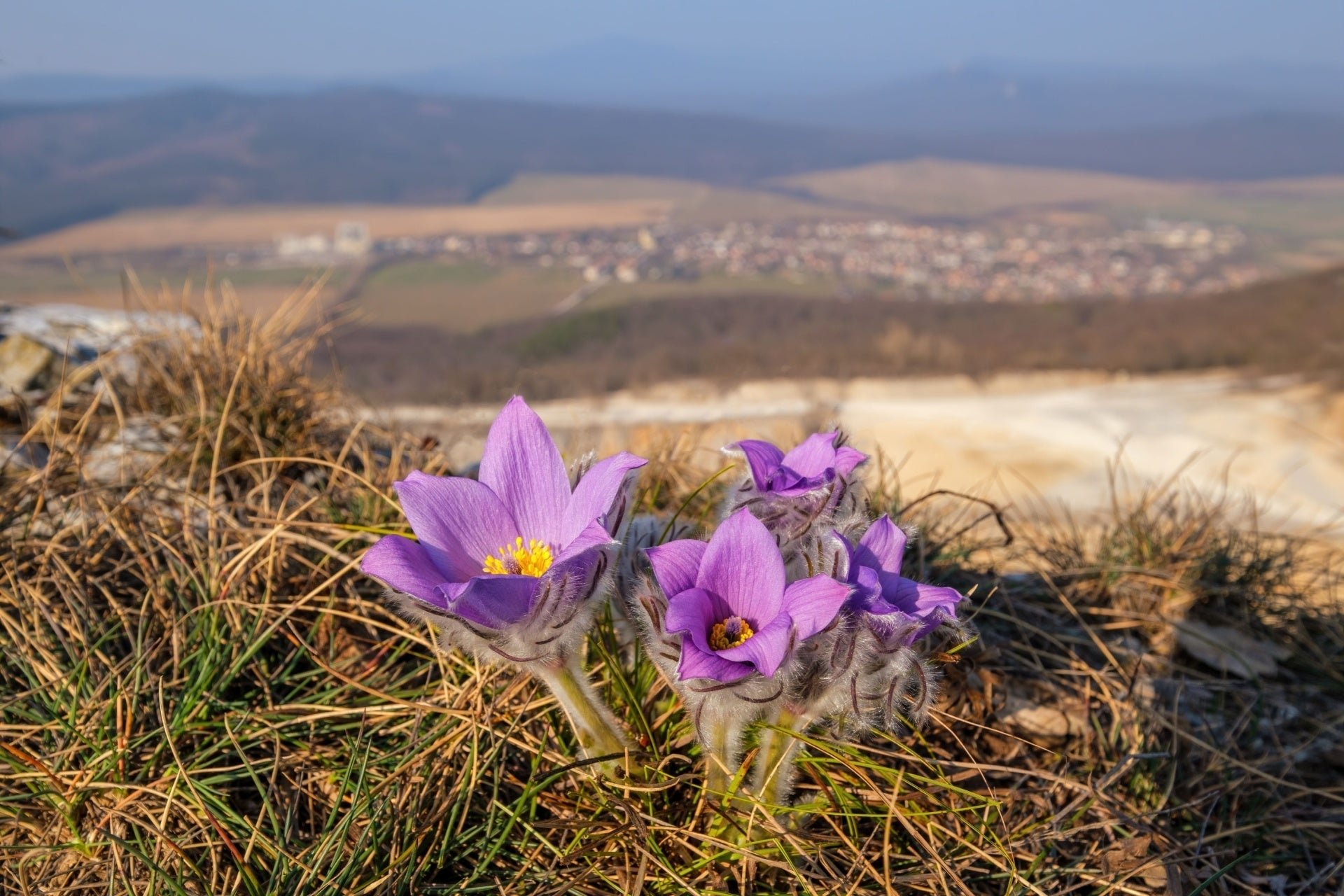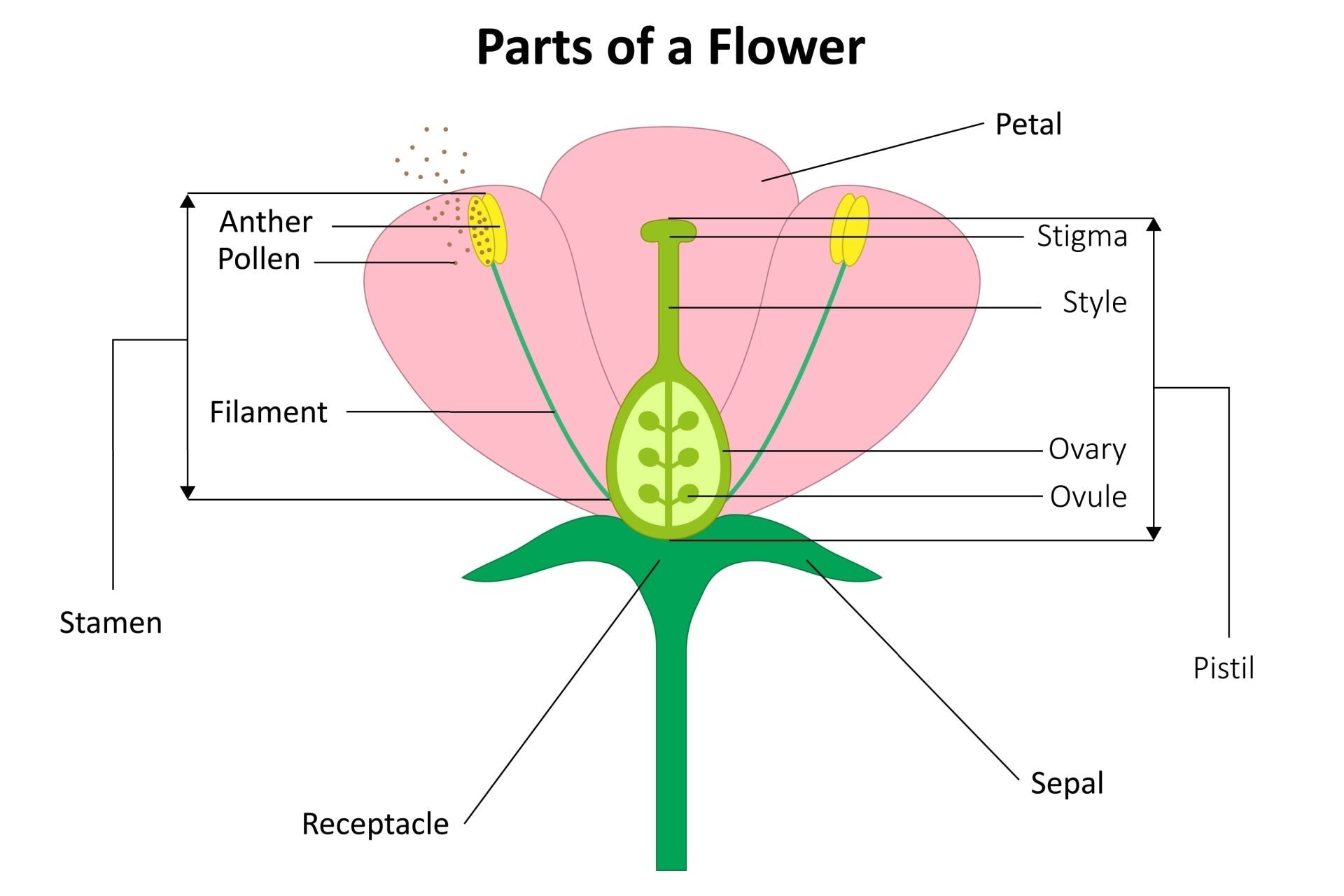Nature created flowers to be outstanding works of art that fulfill key functions within the plant life cycle. Knowing the various parts of a flower improves your ability to care for native plants and boosts your appreciation whether you garden regularly, collect wildflowers or have a general interest in nature. This guide will dissect flower anatomy to explain their functions while showcasing native flowers such as Trillium, Bee Balm, and Coneflower that demonstrate botanical excellence.
The Four Main Parts of a Flower
Understanding flower functionality requires a grasp of their basic structural components. Most flowers are composed of four key parts: The four primary flower parts consist of sepals and petals together with reproductive components known as stamens and carpels or pistils. Each floral component performs a distinct function in both the reproductive process and plant growth.
Sepals are leaf-like structures that form the base of a flower. The sepals maintain their green color while serving as protectors of the flower bud until it opens. The Virginia Bluebell (Mertensia virginica) serves as a prime native example because its sepals tightly enclose the early developing blooms.
The most vibrant section of a flower is its petals which attract pollinating insects and birds through their bright colors. The Bee Balm (Monarda fistulosa) native perennial features striking petals in shades of pink, red or lavender which function as a billboard to attract pollinating insects.
The stamens represent the male reproductive components within a flower. The stamen contains an anther that produces pollen and a filament which supports the anther. The prominent stamens present in flowers such as Purple Coneflower (Echinacea purpurea) rely on both wind and insects for effective pollen distribution.
The female reproductive structures of flowers are known as carpels or pistils. The female reproductive parts include an ovary which develops seeds and a style that functions as a stalk-like connector leading to a stigma that collects pollen. In Trillium grandiflorum flowers the central pistil awaits pollination to start producing seeds.
How Flower Parts Work Together for Reproduction
Each flower component functions together to enable successful plant reproduction. The sepals guard the developing bud. When flowers open their petals their vivid colors attract pollinators which move toward the stamens to pick up or leave pollen behind.
A bee landing on a Wild Columbine (Aquilegia canadensis) flower could collect pollen from the anthers and deposit it onto the sticky stigma of another flower. This is the beginning of fertilization. When pollen reaches the ovary fertilization occurs which triggers seed formation.
Understanding this process isn’t just academic—it’s practical. Your ability to create successful garden designs improves when you understand pollination mechanisms because it supports planting native wildflowers that attract beneficial insects and support natural reseeding. When you plant Black Cohosh and Cardinal Flower in grouped formations you enhance their potential to achieve successful pollination.
Native Flowers and Why Structure Matters
Indigenous flowers play a critical role in supporting local ecosystems and have specialized floral structures which help ensure their survival. Let’s look at a few:
Trillium (Trillium spp. ): This blossoming spring flower displays three petals and three sepals surrounding a central pistil which serves to attract insects during spring. Its symmetrical structure allows it to stand out visually while functioning efficiently in its environment.
Bee Balm (Monarda spp. ): Hummingbirds prefer this native flower because its tubular petals and visible stamens allow pollinators to access nectar and transport pollen with ease.
Purple Coneflower (Echinacea spp. ): The flower's prominent central cone and reflexed petals create a landing platform for bees and butterflies to move across its broad disk while brushing past stamens and stigmas between florets.
Gardeners who study flower part interactions can select native species that flourish in their local area and provide essential support to pollinators. Native flowers with exposed reproductive parts boost pollination success while supporting the recovery of declining species such as monarch butterflies and native bees.
Final Thoughts
Understanding flower anatomy leads to a profound bond with both your garden and the natural environment. Understanding the role petals play in attracting bees and the mechanism through which stamens release pollen transforms planting native Trillium and Coneflower into ecological support beyond simple garden design.
Whenever you find yourself admiring a flower, make sure to examine it more closely. The beauty of flowers extends beyond their surface appearance because they are intricate structures which have evolved throughout millions of years to fulfill essential functions. By understanding native flowers' structures you can help your garden and support the surrounding ecosystem.
Read more

Petunia Flower Power: This resource shows you how to cultivate petunias for vibrant garden styles while learning maintenance techniques for these flowers.

The Pasque Flower stands as a signature plant for native wildflower meadows and alpine rock gardens as well as pollinator-friendly borders because it delivers aesthetic beauty and ecological benefits.



